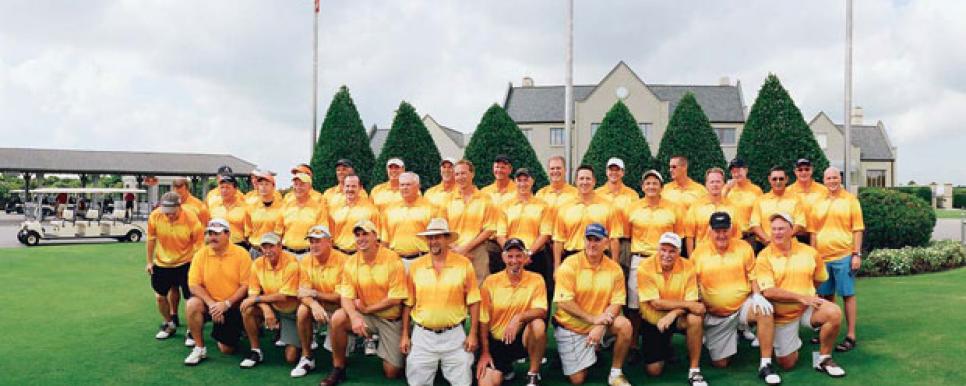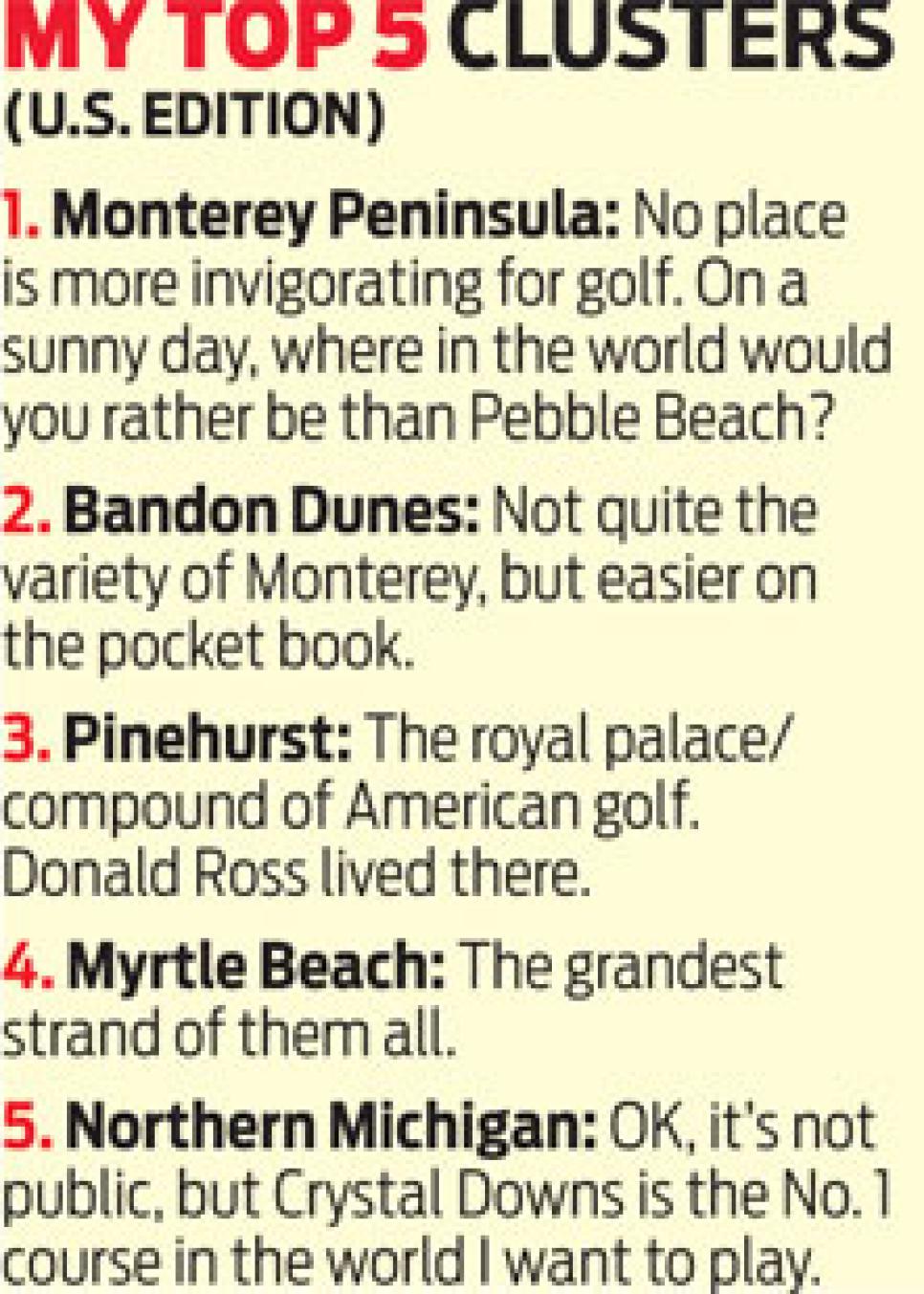Pack Your Bags

The Pinnacle Benefits Group visits Myrtle Beach each year but still delights in home cooking.
Our late founder, Bill Davis, believed in what he called "the cluster concept" -- all golf destinations are looked upon in terms of a cluster of great courses worth playing. "That's the best way to enjoy a trip," he'd say. "Play many different courses but stay in one place." He might have picked up the idea from our old columnist Henry Longhurst, who first wrote about the six clusters of golf in the British Isles: London, Sandwich, Liverpool, the West of Scotland, Edinburgh and the triangle of Gleneagles, Carnoustie and St. Andrews.
The hottest course in America right now -- Old Macdonald in the Bandon Dunes cluster -- looks like it was lifted, cleaned and placed from the West of Scotland. USGA potentate David Fay is quoted on page 84 as saying he'd take the Bandon Dunes cluster over the Monterey Peninsula cluster, which is just plain crazy talk. But that's the wonder of being a golfer; we argue over such things and then play 36 holes to settle it the next day.
My friend Rick Smith -- "Not The Golf Pro," as I like to call him -- prefers to play the Palm Springs cluster in the wintertime and the Northern Michigan cluster in the summertime. One of my all-time favorites is the Pinehurst cluster, where I can't walk the fairways without remembering rounds played with absent contributors Charley Price, Bob Drum and Peter Dobereiner. Camaraderie is three-quarters the reason for taking a buddies golf trip anyway.

Which I guess is a long way of explaining why 17 pages in this issue are titled "How to Myrtle Beach." A lot of people claim to have discovered Myrtle Beach, but I'd make a strong case for Bill Davis and the early editors of Golf Digest for popularizing it. Starting in the mid-1950s and regularly ever since, the magazine promoted the Myrtle Beach cluster in articles, advertisements and travel sections. Golf Digest even started the World Amateur Handicap Championship there. And local course owners did something no one had ever done before: band together to market The Grand Strand agnostically -- that is, they sold the whole area, not individual courses.
"Myrtle's genius was to attract golfers by offering extreme value and a good time," says Senior Editor Matt Ginella. "Let golfers decide where they stay, play and eat. That's how the area sustains close to 100 public courses in a billboarded and strip-malled stretch of 60 miles across two states."
Partly in celebration of the magazine's 60th anniversary this year, Ginella and fellow Senior Editor Peter Finch embedded themselves in Myrtle Beachdom, hanging out in taxi cabs and emergency rooms, steakhouses and music spots. They stalked five disparate buddies trips, including the orange men pictured above -- are those the worst shirts you've seen since Ben Crenshaw's 1999 Ryder Cup team? In the end, our panel identified the 60 favorite places to play.
One night Finch went to the Cane Patch lighted driving range and par-3 course and told the guy behind the counter he was looking for the secret to a great Myrtle Beach trip. The guy laughed and said, "There's no secret, pal. That's the beauty of the place. It's all right there in front of you."
Well, save this issue, pal. Because you'll never find a better guide to the cluster known as Myrtle Beach.
